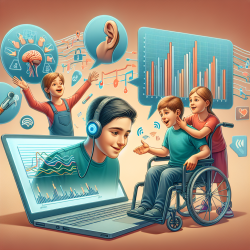Introduction
The COVID-19 pandemic has been a pivotal moment in our history, reshaping countless aspects of our lives. One of the most profound impacts has been on adolescent mental health, as highlighted in the research article, "A Dangerous Pandemic Pair: COVID-19 and Adolescent Mental Health Emergencies." As practitioners, it is crucial to understand these challenges and adapt our approaches to better support our youth during these trying times.
The Current State of Adolescent Mental Health
Before the pandemic, mental health crises among adolescents were already on the rise. According to the Centers for Disease Control and Prevention, suicide rates among adolescents aged 10–19 increased by 56% between 2007 and 2016. The pandemic has exacerbated these issues, leading to increased isolation, depression, and anxiety among young people.
Emergency Departments (EDs) have become de facto psychiatric crisis units, overwhelmed by the influx of adolescents in crisis. This situation underscores the inadequacies of our pediatric mental health system and the urgent need for specialized care.
Adapting to the New Normal
As practitioners, we must adapt to the evolving landscape of adolescent mental health. Here are some strategies to consider:
- Embrace Telehealth: The pandemic has accelerated the adoption of telehealth, providing a valuable tool for reaching adolescents in need. By leveraging technology, we can offer timely support and reduce the burden on emergency departments.
- Enhance Surveillance and Tracking: Schools have traditionally played a crucial role in monitoring students' mental health. With many schools operating remotely, we must find new ways to track and address mental health issues, such as through social media campaigns and community outreach.
- Develop Crisis Response Protocols: Establishing clear protocols for responding to mental health emergencies can help bridge the gap between crisis centers and community care. This approach ensures that high-risk youth receive the support they need without overwhelming emergency departments.
Encouraging Further Research
While the research article provides valuable insights, there is still much to learn about the long-term effects of the pandemic on adolescent mental health. Practitioners are encouraged to conduct further research and share their findings with the broader community. By collaborating and exchanging knowledge, we can develop more effective strategies for supporting our youth.
Conclusion
The COVID-19 pandemic has highlighted the urgent need for a comprehensive approach to adolescent mental health. As practitioners, we have a responsibility to adapt our practices and advocate for the resources necessary to support our youth. By embracing telehealth, enhancing surveillance, and developing crisis response protocols, we can help guide adolescents through this challenging time and into a brighter future.
To read the original research paper, please follow this link: A dangerous pandemic pair: Covid19 and adolescent mental health emergencies.










